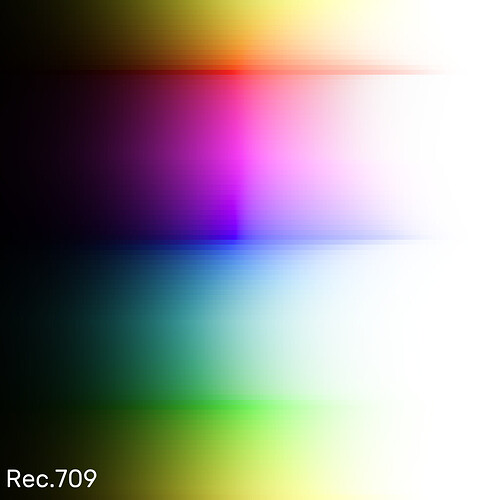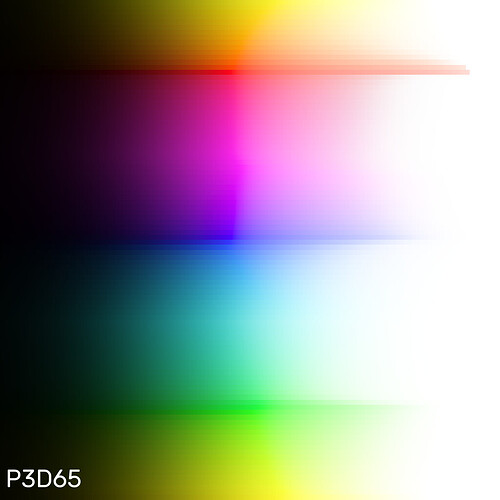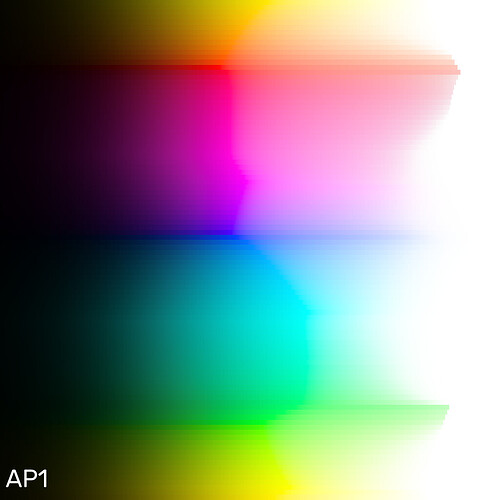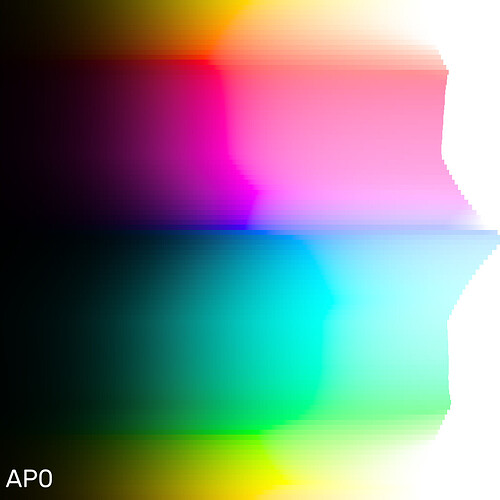This is a recap of the gamut mapper issue in CAM DRT v052 talked about in the past couple meetings.
The basic issue is that with the current gamut mapping implementation it is not possible to change the projection angle to a steeper one, in order to better preserve highly saturated colors in the highlights in SDR, without introducing issues with gradients.
Important to point out up front that this issue is not related to the reach mapper or how far out the gamut mapper reaches in compression. The same issue happens also in non-reach mode.
Following images are ramps of Rec.709, P3, Rec.2020, AP1, AP0 and AWG inputs, in CAM DRT v052 with focus distance value set to 1.0 for a steeper projection. This is a way to clearly demonstrate the issue:
What we’re seeing here is that not all of the mapped hues have proper path-to-white. All colors are mapped within Rec.709 gamut, but only the Rec.709 input seems to have path-to-white for all the hues. All other examples show that some or most of the hues instead clip to white.
This happens because the quadratic used in the computations doesn’t have the ability to smoothly change the projection from a steeper angle to a more horizontal angle as it approaches display white (and black), as shown in the example slope plot below.
No path-to-white:
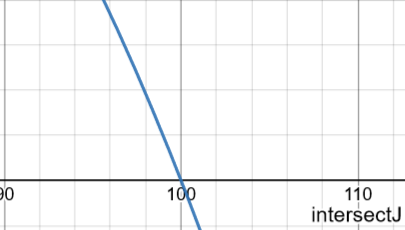
Smoother path-to-white:
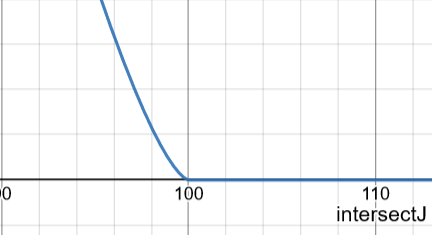
Here is an example rendering of the above ramp image with a mapper that always has a path-to-white for any input value. This is the experimental version of the AP1 reach mapper:
Here’s one example of the implications of not having path-to-white (focus distance 1.0):
Smooth path-to-white:
As far as I can see, there’s few things that can be done about this:
-
Do nothing, and set the focus distance to a high enough value (near horizontal projection) so that the slope hits the display white with shallow enough angle so that visually everything looks to have smooth path-to-white. This is the current approach. The downside is that highly saturated colors will lose saturation very quickly in SDR. The current value in v052 was picked to have visually smooth path-to-white in AP1, but AP0 and beyond shows clipping.
-
Go back to the old mapper we have which has smooth path-to-white for any input value. This mapper doesn’t use the quadratic approach. A reach version of that mapper can be done the same way as the current one. The downside is that the inverse will become an approximation. This mapper would have no limitations on how steep the projection is, it would always have smooth path-to-white, regardless of the input value.
-
Perhaps a separate path-to-white step after the gamut mapper could be added, but it sounds hacky.
